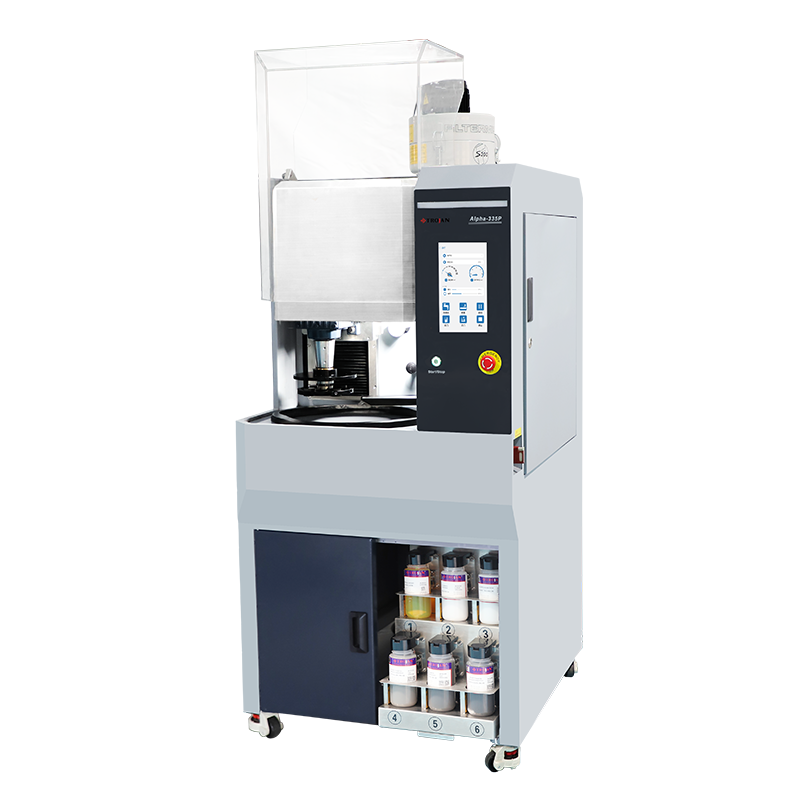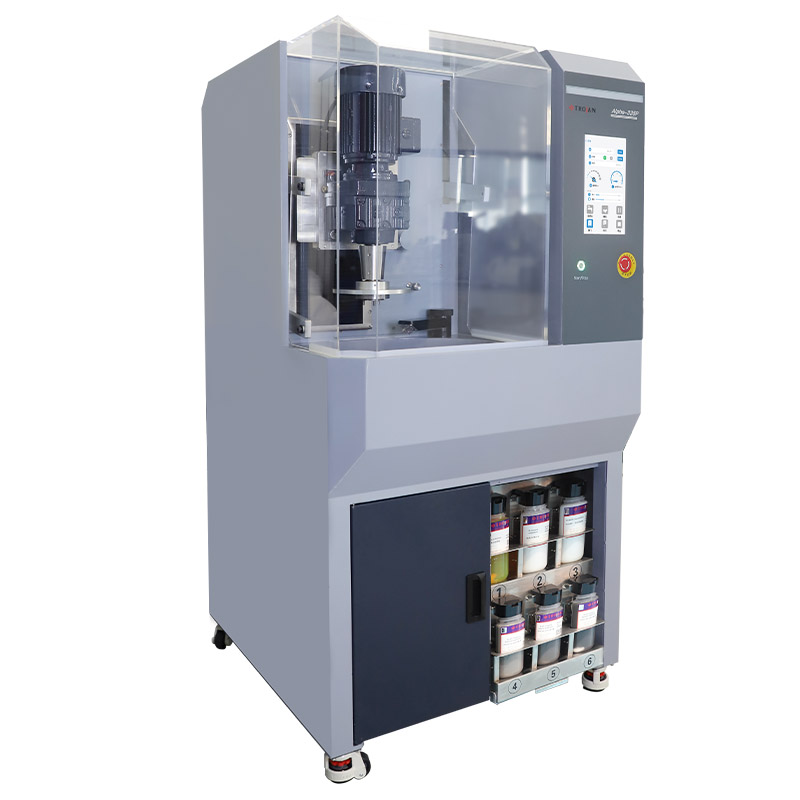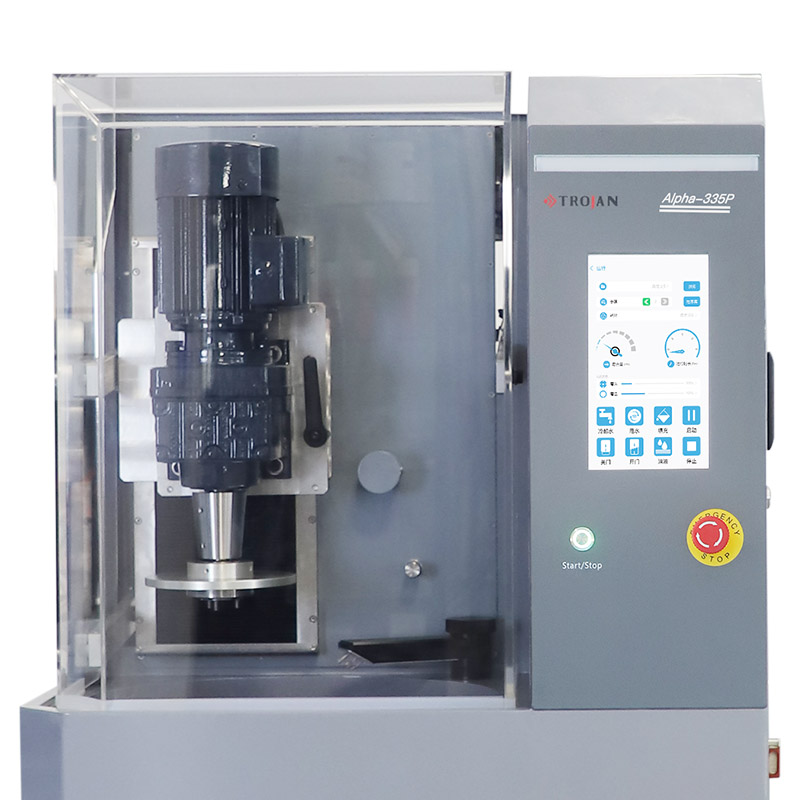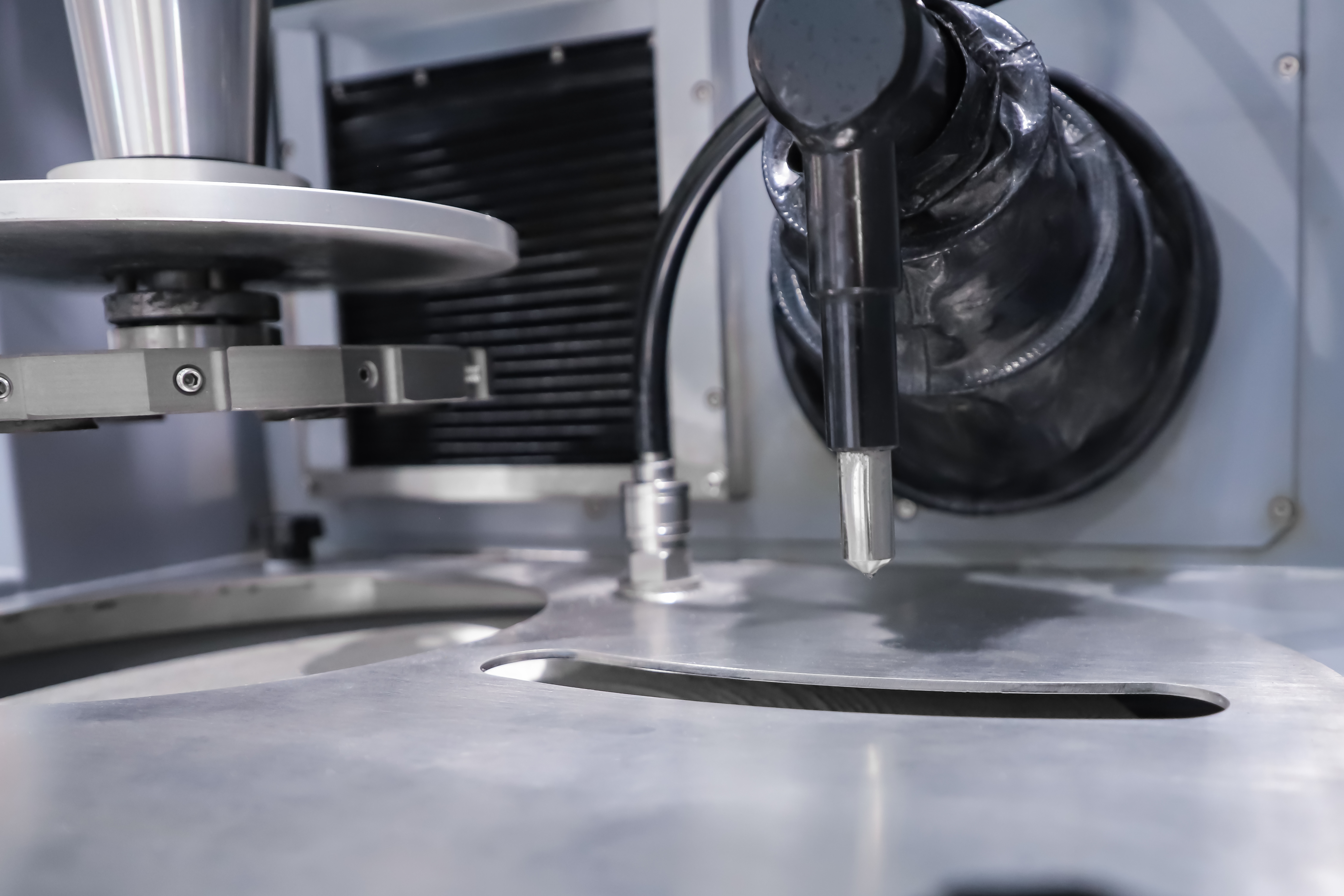1. What is an abrasive polishing machine and how does it work?
An abrasive polishing machine is a mechanical device designed to refine surfaces by removing small amounts of material through abrasion. The process involves the use of abrasive wheels, belts, or discs that rotate at high speeds to grind, buff, or polish a workpiece. The Alpha-335P grinding and polishing machine, for instance, employs a motor-driven spindle that holds different abrasive attachments, allowing for adjustable speed and pressure to achieve desired finishes.
The automatic polishing machine operates by applying friction between the abrasive medium and the workpiece. Depending on the grit size of the abrasive, the machine can perform coarse grinding, fine polishing, or mirror-finishing. The Alpha-335P model, in particular, is engineered for consistency, ensuring uniform material removal and minimizing surface defects. Key components include the motor, spindle, abrasive tooling, and a worktable or fixture to secure the workpiece.
2. Different types of abrasive polishing machines
Abrasive polishing machines come in various configurations, each suited for specific applications. Below is an overview of common types:
| Type |
Description |
Common Use Cases |
| Bench Grinders |
Compact machines with rotating abrasive wheels for manual grinding and polishing. |
Deburring, edge finishing, tool sharpening. |
| Belt Sanders |
Use continuous abrasive belts for rapid material removal. |
Woodworking, metal finishing. |
| Orbital Polishers |
Move in a circular or random orbital motion to reduce swirl marks. |
Automotive paint correction, fine polishing. |
| Centerless Grinders |
Grind cylindrical parts without using a spindle or fixture. |
Precision machining of rods and tubes. |
| The Alpha-335P |
A versatile grinding and polishing machine with adjustable speed and tooling. |
Laboratory samples, metallurgical prep. |
Each type serves distinct purposes, with the Alpha-335P being particularly useful in settings requiring controlled, repeatable results.
3. Safety precautions when using an abrasive polishing machine
Operating an abrasive polishing machine requires strict adherence to safety protocols to prevent injuries and equipment damage. Key precautions include:
- Personal Protective Equipment (PPE): Wear safety goggles, gloves, and hearing protection to shield against flying debris and noise.
- Machine Inspection: Ensure the abrasive wheel or belt is properly secured and free from cracks before operation.
- Workpiece Securing: Use clamps or fixtures to prevent the workpiece from slipping during polishing.
- Speed and Pressure Control: Excessive force or incorrect speed settings can damage the workpiece or the abrasive medium.
- Dust and Fume Extraction: Many polishing processes generate fine particles; use ventilation or extraction systems to maintain air quality.
The Alpha-335P model includes built-in safety features such as emergency stop buttons and overload protection, further enhancing operational safety.
4. Common applications of abrasive polishing machines
Abrasive polishing machines are widely used across industries due to their efficiency and precision. Some key applications include:
- Metalworking: Removing burrs, weld seams, and oxidation from metal parts.
- Automotive: Refining paint surfaces, polishing headlights, and restoring chrome finishes.
- Jewelry Making: Smoothing and polishing precious metals and gemstones.
- Medical Devices: Ensuring ultra-smooth surfaces on surgical instruments and implants.
- Aerospace: Finishing turbine blades and other high-precision components.
The Alpha-335P is particularly effective in metallurgical laboratories, where sample preparation demands high repeatability and minimal surface distortion.
5. Advantages of using an abrasive polishing machine over traditional methods
Compared to manual polishing or older mechanical methods, modern abrasive polishing machines offer several benefits:
- Consistency: Automatic polishing machines like the Alpha-335P produce uniform finishes with minimal human error.
- Efficiency: High-speed abrasion reduces processing time significantly.
- Versatility: Interchangeable abrasive media allow for multiple finishing operations on a single machine.
- Precision: Advanced models provide fine control over speed, pressure, and abrasive selection.
- Cost-Effectiveness: Reduced labor costs and material waste improve overall productivity.
Abrasive polishing machines, including the Alpha-335P grinding and polishing machine, play a crucial role in modern manufacturing and finishing processes. Understanding their operation, types, safety measures, and applications ensures optimal performance and longevity. By leveraging these machines, industries can achieve superior surface finishes with greater efficiency than traditional methods. Whether for industrial metalworking or delicate jewelry polishing, selecting the right abrasive polishing machine is essential for quality results.

 中文简体
中文简体 英语
英语 西班牙语
西班牙语 德语
德语


























